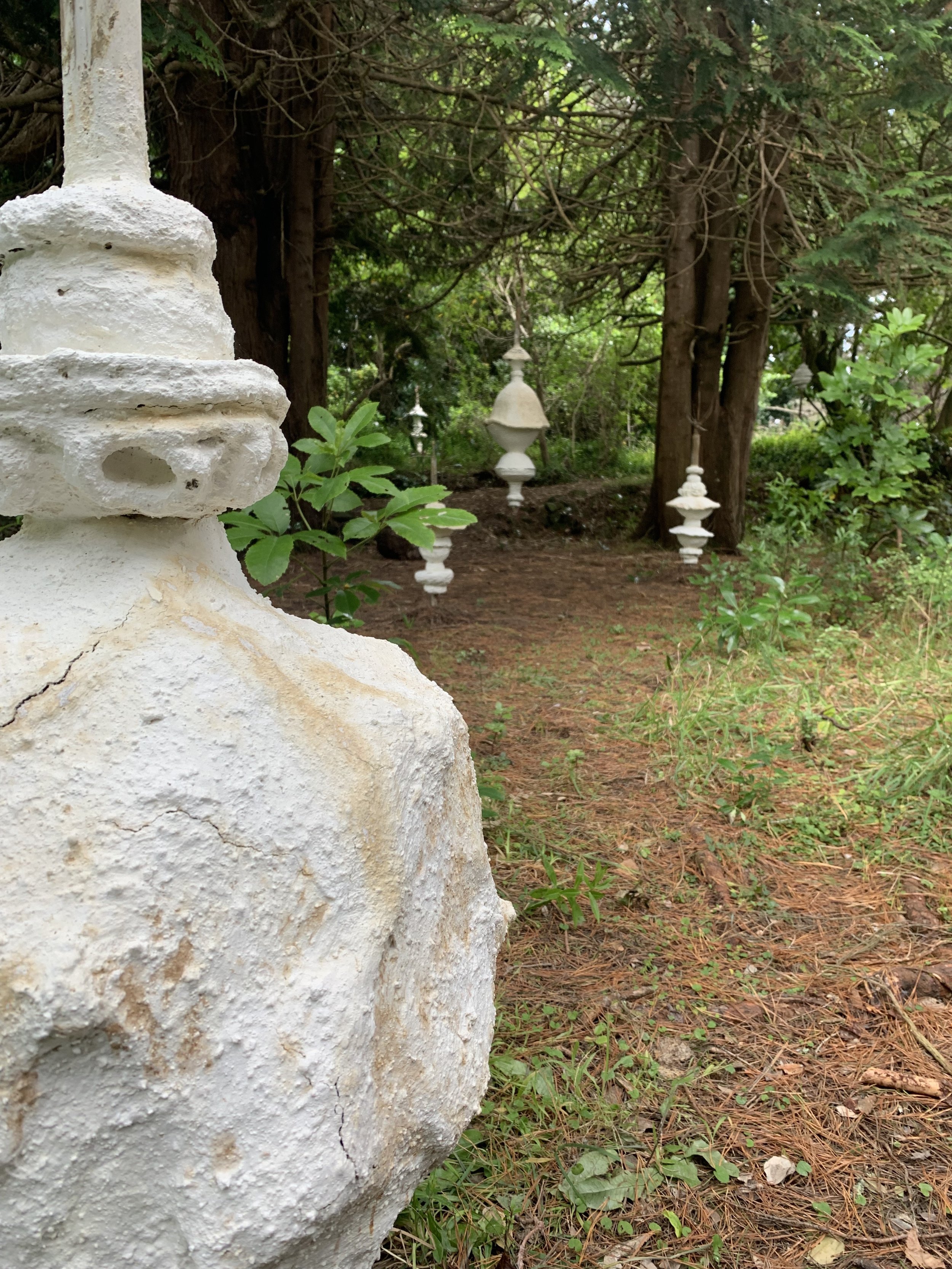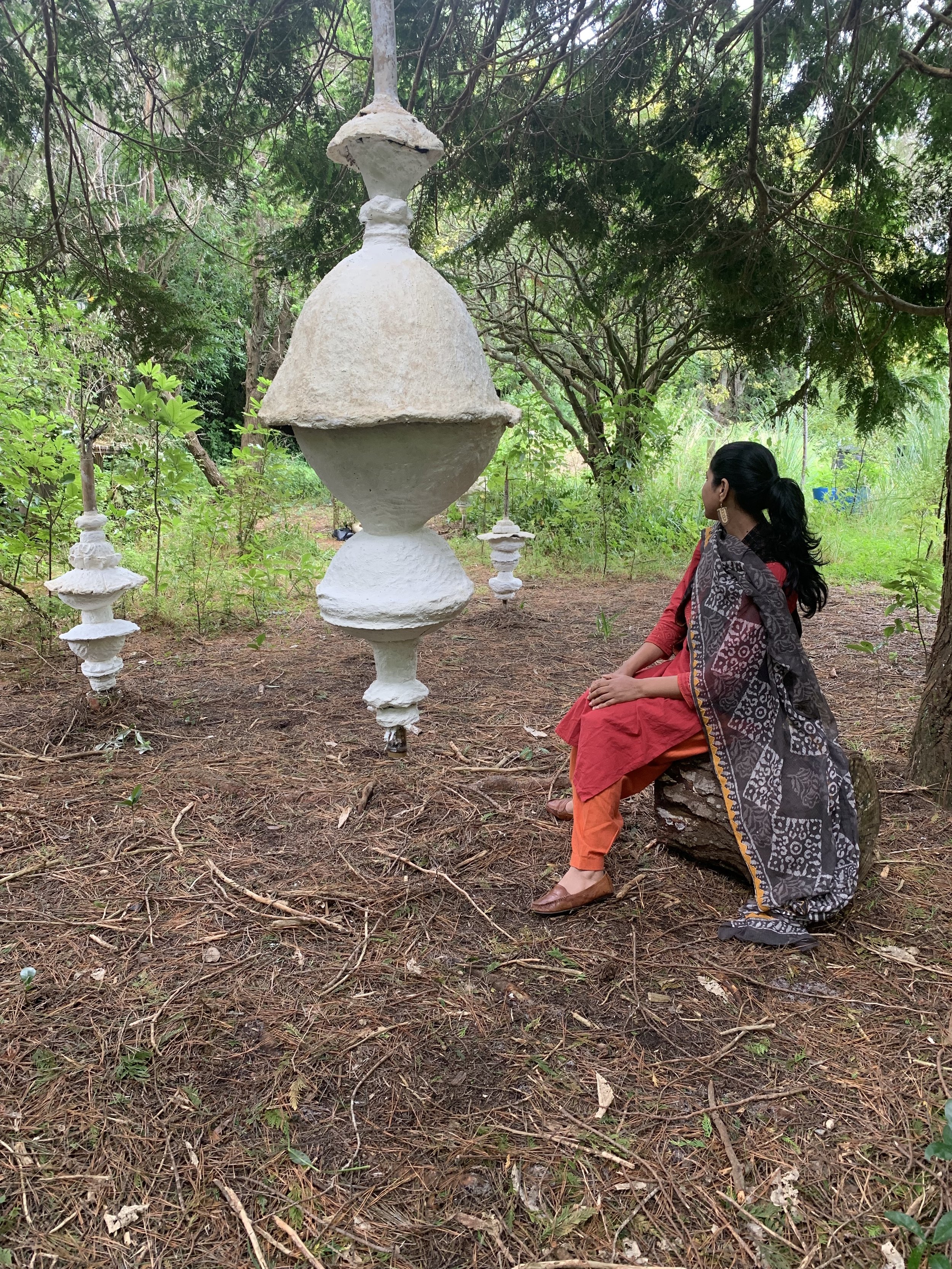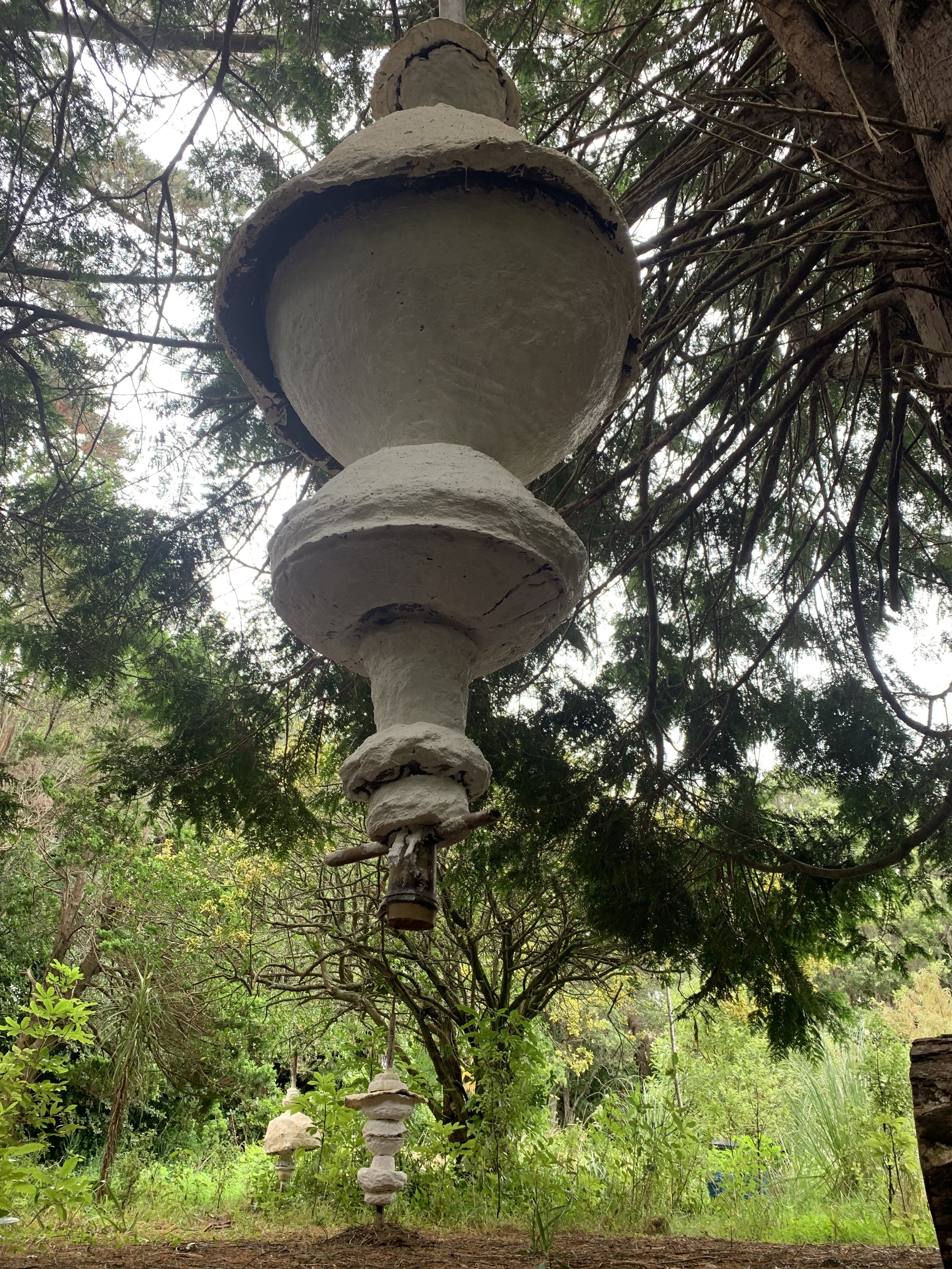











Habitat for Life by local artists Manju Tomar and Ruth Robertson Taylor opened earlier this year and is on display at the Miramar Prison Gardens, where the pair have been artists-in-residence since March 2022.
Together they have created a winding trail of sculptural objects that can be discovered hanging from branches and sprouting from the pine needle covered earth. Sculpted using cow manure from the neighbouring farm (who knew there were cows residing in Motu Kairangi), then white-washed in lime, the teetering and pendulous organic forms suggest a mysterious village has emerged from the depths of the community garden.
In fact, it has. The sculptures have been designed as homes for non-human life, intended to provide shelter and sustenance for the insects and birds that frequent the garden.
The habitats have an ornamental quality, evoking architectural wonders from another time with suspended and stacked bell-like shapes ranging in size up to over two metres. Habitat for Life draws on the artists’ varied backgrounds in ceramics, permaculture and community-based art projects.
There is serious labour involved in making the artworks, hours spent in latex gloves collecting, moulding and drying dung. It’s a highly experimental process driven by the artists’ shared commitment to finding more sustainable ways to live and make art. In Tomar’s homeland of India, cow dung is a sacred material used in prayer, as fuel and as building insulation.
Why not encourage exploration of its unique properties in Aotearoa? I visited Habitat for Life a few months back, but the installation remains open 24/7. Over time, the artworks will slowly disintegrate, eventually returning to the whenua.
—
Words by Eye Armstrong